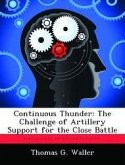This study is an analysis of the close support artillery battalion in the Light Infantry Division (LID) and its relationship with the maneuver brigade. There is currently a debate over whether the maneuver brigade should have an organic artillery battalion or the traditional direct support artillery battalion. Recent studies such as ARMY 21 and MOC 96 (Maneuver Oriented Corps) suggest organic artillery battalions are the best organization for the future battlefield. In addition recent experience at the National Training Center indicate in general that maneuver-fire support team relationships have some serious weaknesses. One solution in correcting these problems and organizing units for the future battlefield is organic artillery battalions in the maneuver brigades to include the brigades of the LID. In order to determine if the maneuver brigades should have organic artillery battalions in the LID this paper examines the LID, its unique missions, capabilities and limitations, and its unique light infantry characteristics. Also considered are historical examples of U.S. and German light divisions in WWII, U.S. infantry divisions in Vietnam and the contemporary British light contingency force. The analysis includes an examination of the employment of close support artillery in these historical examples using the fire support doctrinal tenets of adequacy, flexibility and continuity. Technological improvements in field artillery systems are also considered as they relate to a potential need for a change in the artillery battalion-maneuver brigade relationship. Finally, the organic and direct support options are examined using four principles of war: offense, mass, economy of force and unity of effort. The study concludes that the close support artillery battalions of the LID should not be organic to the maneuver brigades. The LID is designed to combine arms at the division level and the division cannot synchronize firepower for the division battle if the artillery batt
Hinweis: Dieser Artikel kann nur an eine deutsche Lieferadresse ausgeliefert werden.
Hinweis: Dieser Artikel kann nur an eine deutsche Lieferadresse ausgeliefert werden.








